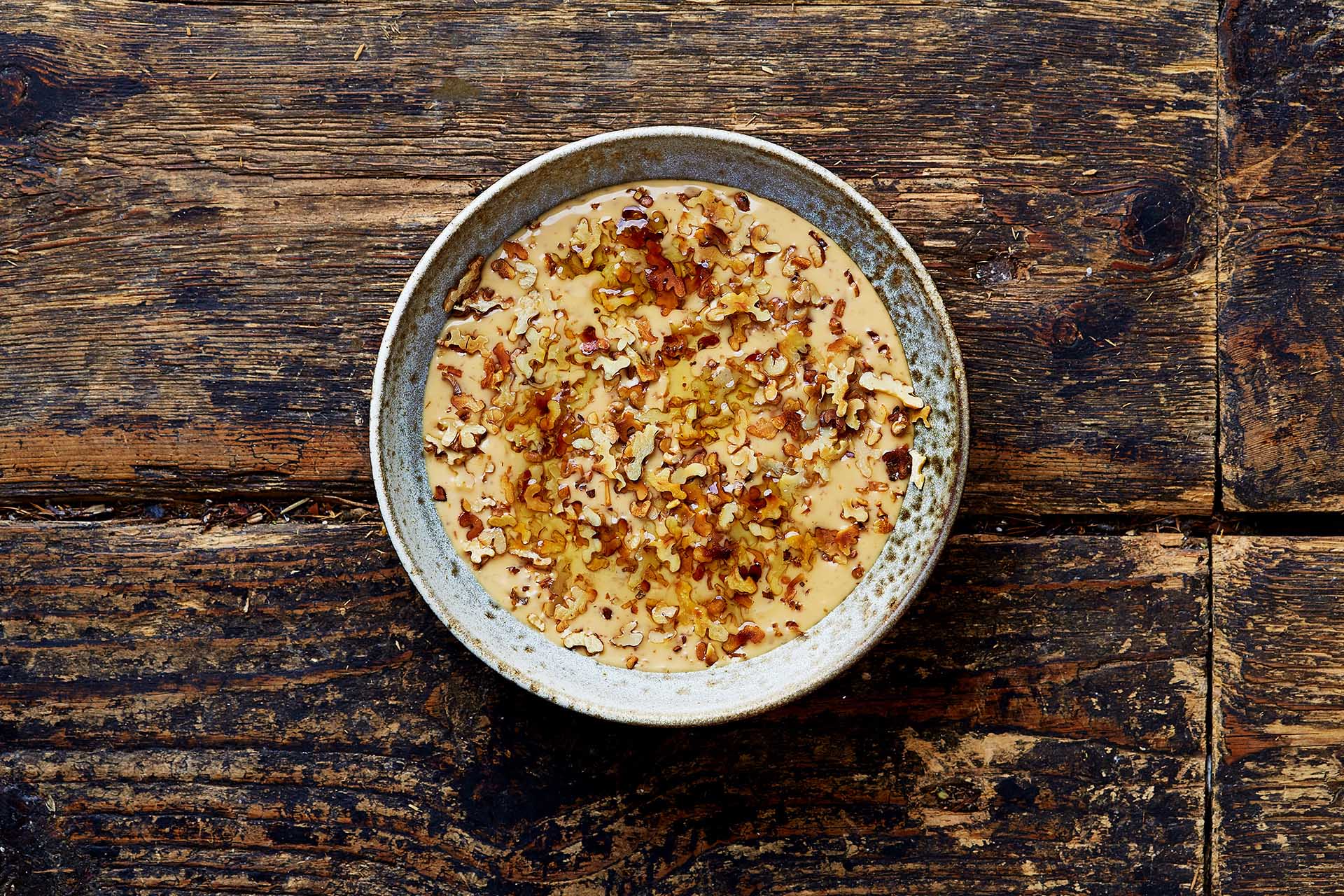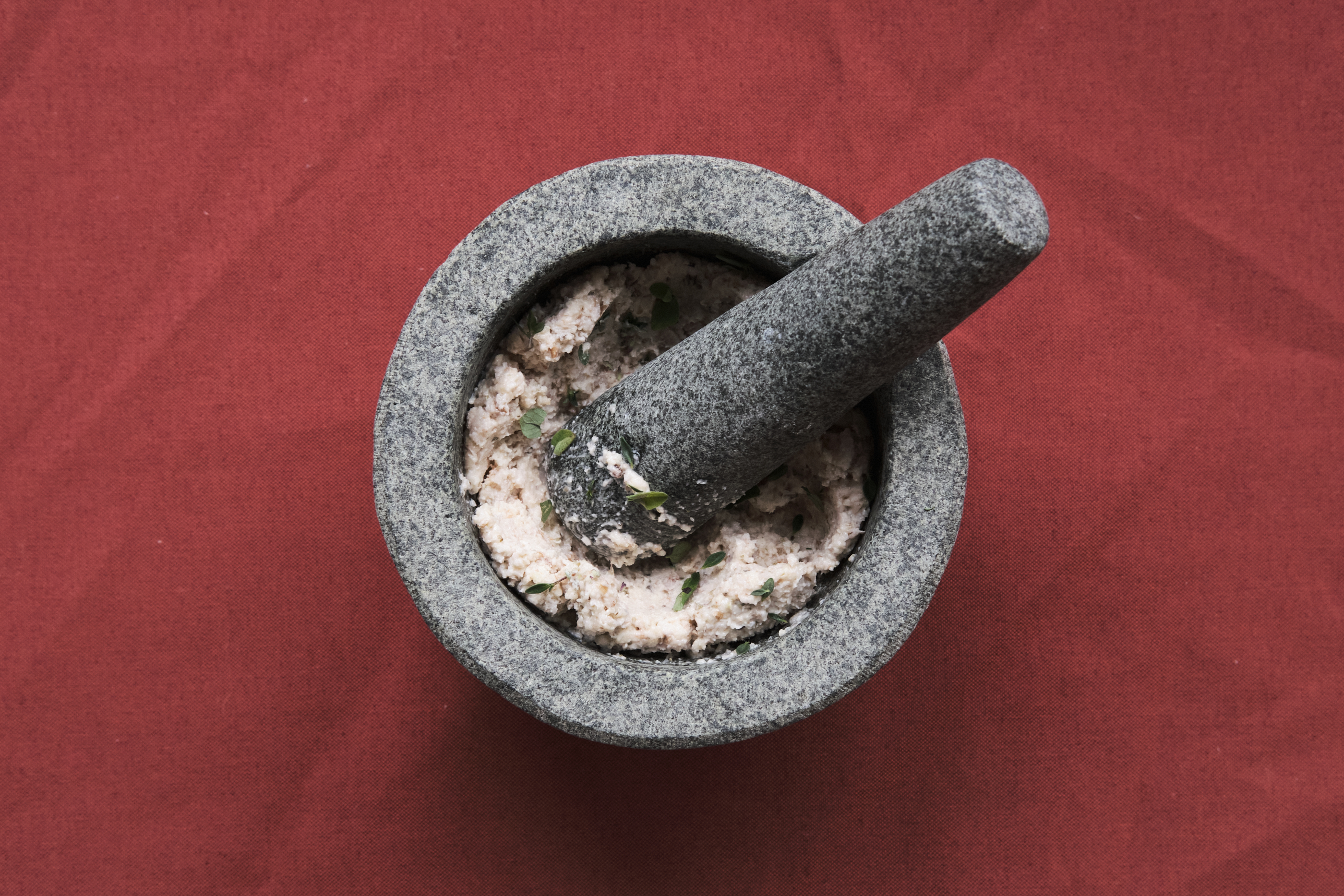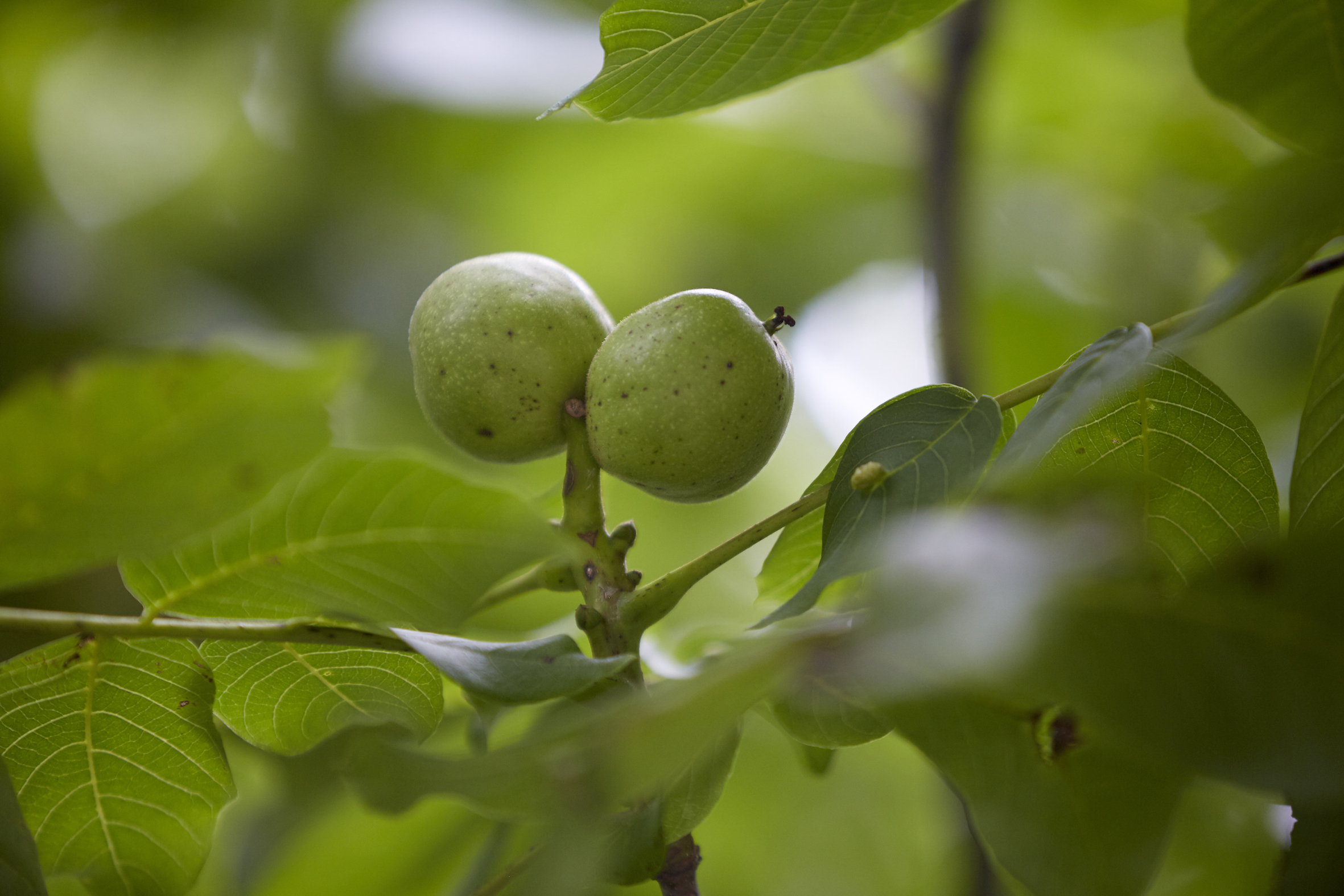
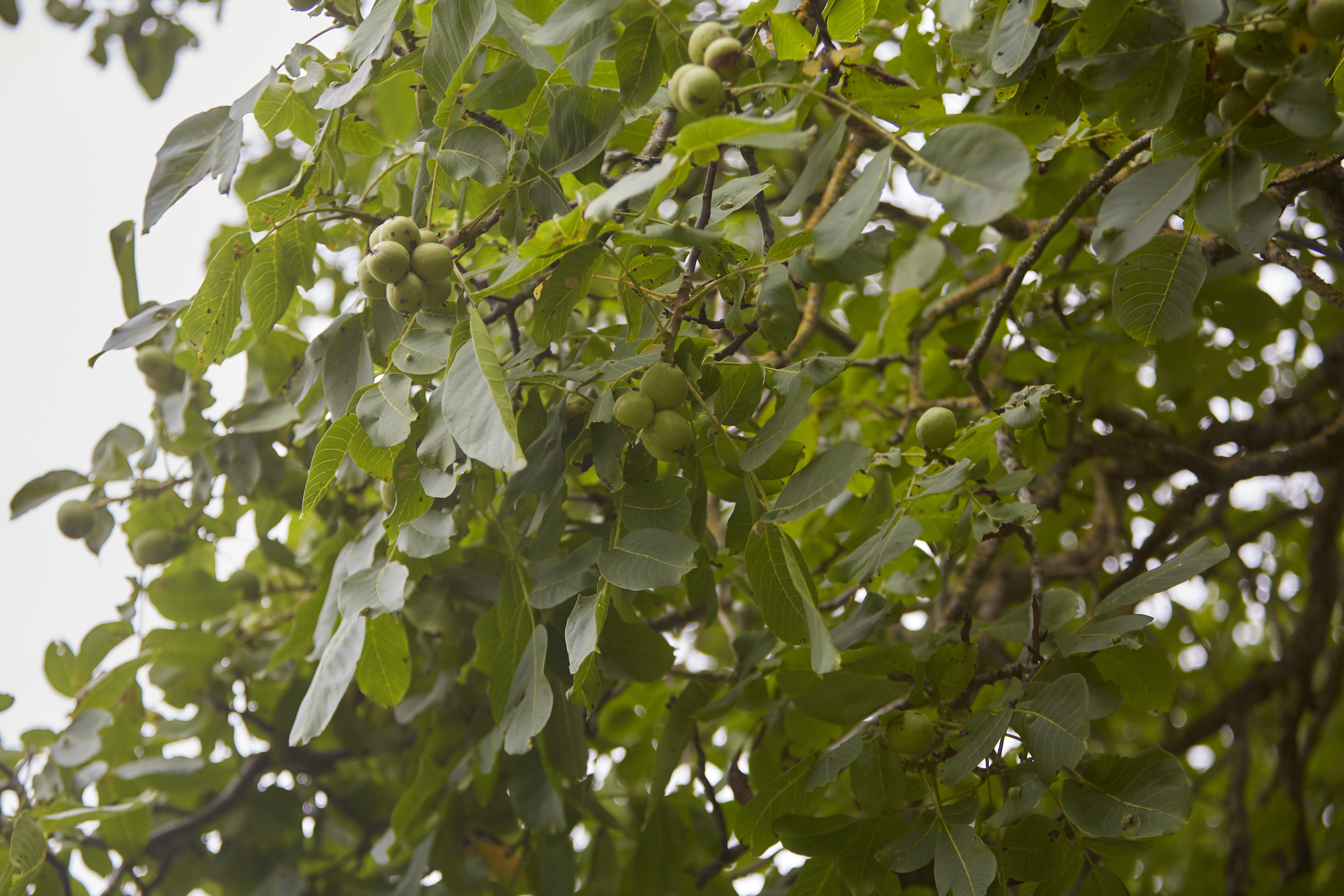
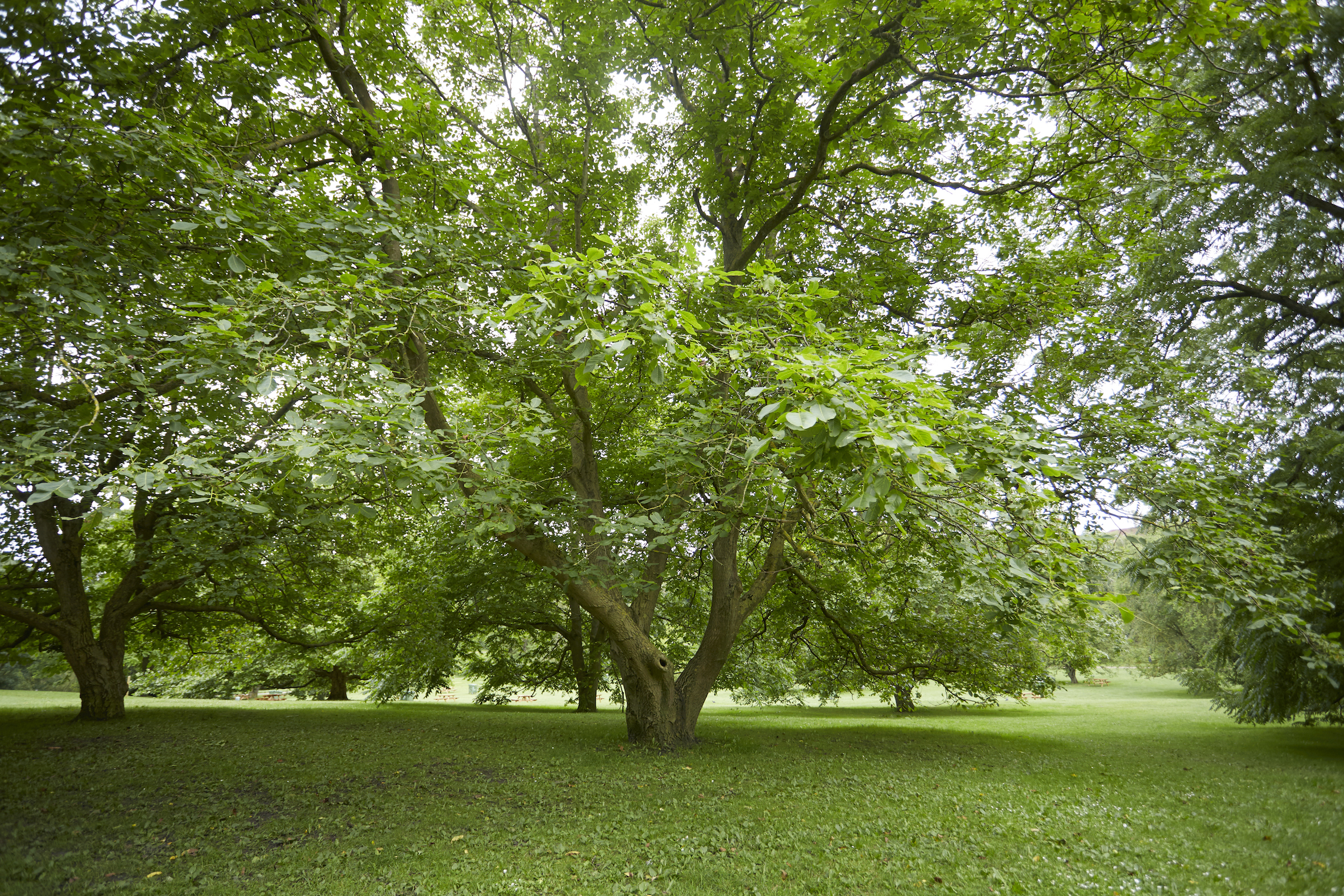
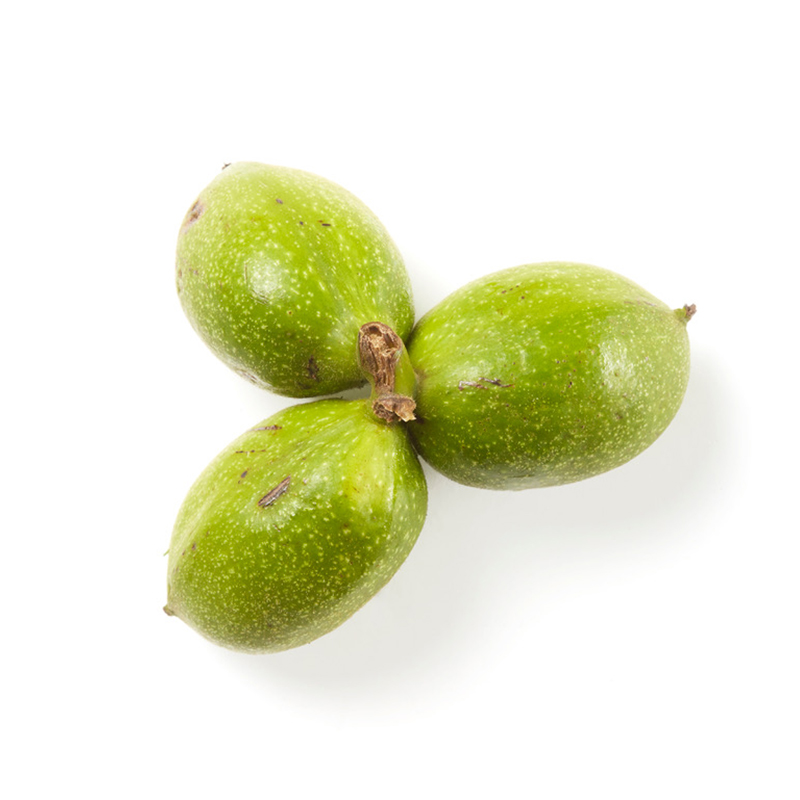
Walnut
"Every careful and sensible housewife pickles green, unripe walnut fruits on Saint John's Eve, which protect against the plague and fortify the stomach." Or so goes a 400-year-old saying. But you don't need the plague as an excuse to pick walnuts, because they're delicious in cooking, whether green or brown.
-
Where to Find It
Walnut trees grow in the northernmost limits of Denmark, where they're found together with other hardwood trees at the edge of forests, in parks, and in gardens. They need lots of light, so don't go looking for them in dense forests, but in places where their large crowns can really spread out.
Deciduous forests, towns, hedges. -
When to Find it
Harvest unripe walnuts in early July; the ripe nuts will be ready from the end of August until September or October.
Unripe nuts: July. -
How to Spot It
The walnut tree is a large hardwood tree—it's not unusual for it to grow to 20-30 meters tall—with a broad crown. On young trees, the bark is olive green, though it will turn more silvery with age. The oval leaves are light green and leathery. The terminal leaf on each branch is larger than the rest. Unripe walnuts are egg-shaped, greyish-green in color, and very aromatic. In autumn, the nut falls and turns a darker color, so you can at last see the ripe seed kernel's yellow-brown shell peak through.
-
How to Pick It
You can either pick walnuts in early summer when the green, unripe nuts are out, or in fall when the seed kernels have ripened. Clip green nuts from the tree, and gather ripe ones from the ground.
Ripe nuts: August, September, October.
Risk of misidentifying the plant


